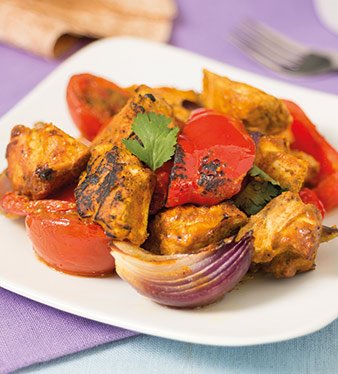
Want to add a bit of spice to your life, but not the guilt? Then try a homemade curry that’s big on flavour, but small on calories.
- Limit the amount of oil you use to 1 tsp per person in the dish, and opt for olive, rapeseed and sunflower oils, which are higher in unsaturated fats.
- If you want to make your dish a little creamy use low-fat crème fraiche, which is stable when heated so will still give your curry that creamy texture.
- Certain meat and veg combinations, such as lamb with spinach, work well together. Or you could go veggie and add pulses, such as chickpeas and lentils, which are a good source of protein. And, with homemade curries, you can choose lots of veg, adding colour while making up your five a day.
- Watch the salt. Most shop-bought or takeaway curries are high in salt, but if you make your own you’ll soon discover that adding very little or no salt brings out the flavours of all the other wonderful ingredients, including the herbs and spices.
- Some Thai and Malaysian curries use a lot of coconut milk. You can choose to use less or substitute it with a lower-fat variety that will still give you the same great flavor with less fat and calories.
- Tomato-based curries need very little oil. The key is to use a heavy-bottomed pan and cook on a medium to low heat, stirring frequently. Remember, you don’t want to see a lot of oil floating on the top of the curry after it’s been cooked.
Originally printed in Diabetes Balance magazine – become a Diabetes UK member and get your copy.
